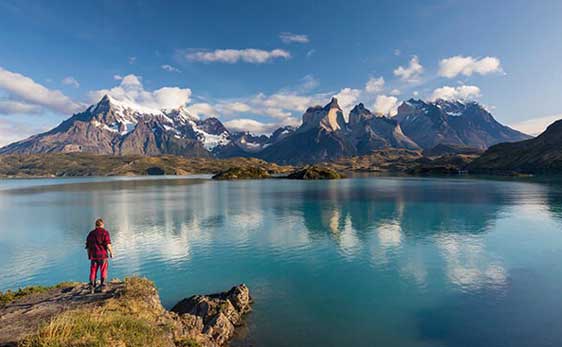Guide to Culture and Traditions in Chile - Holidays, Festivals and Daily Etiquette
By Michelle Thompson
Chile, best known for its impressive wines and former political history, spans only 100 miles wide and has a long coastline. The Andes Mountains spill into its eastern region and are visible from some of the beaches along the Pacific Ocean. From the Atacama Desert to the Mediterranean climate of central Chile to the glaciers of Patagonia, this country offers a broad variety of cultural traditions, terrains, and climates.
Perhaps one of its most iconic cultural attractions is Eastern Island. Also called Isla de Pascua, this part of the country is known for its Polynesian-style statue heads in Rapa Nui National Park called moai. The monuments were recognized as a World Heritage Site by UNESCO in 1995.
Chile’s most influential cultures have been the Indigenous nations of the Andes and the European settlers who arrived during the colonial era. Historically, the Mapuche people have been the most present in the region. After the Spanish colonized the continent and Spain lost its war against France, Chile became an independent state in 1810. The country has since seen more immigration waves from Europe and the Middle East.
During the 20th century, Chile was ruled by a dictatorship and people were subjected to the suppression of free speech. Those who criticized national leaders often “disappeared.” Despite its troubled political past, Chile has become a flourishing democratic state and conditions have drastically improved for its citizens since the 1990s.
Holidays and Festivals in Chile
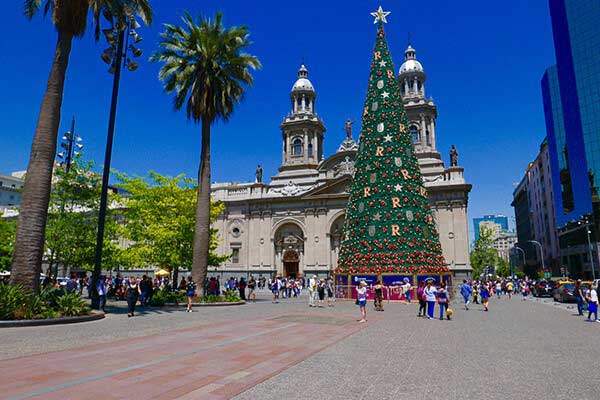
Chile is a largely Catholic nation and as such its people celebrate Christmas and the New Year annually. On Christmas Eve, Chilean families love to exchange gifts and eat pan de Pascua, a tasty fruitcake. They also enjoy cola de mono which is made of milk, sugar, coffee, cinnamon, and alcoholic spirits. For Chileans, Christmas day is a time for prayers, carol singing, and sharing a feast with loved ones. Because Christmas is celebrated during the summer, many people love to go hiking, rock climbing, or swimming at the beach.
On December 31, Chileans celebrate New Year’s Eve. Valparaiso is known for hosting the biggest New Year’s Eve festival in the country with the largest fireworks display in Latin America. As a tradition, Chileans like to place money in their shoe and walk around the block to attract luck, money, and future travel opportunities. They also have a practice of writing down their negative experiences and burning the paper as a symbolic act of letting go and moving towards the future. Chile’s Indigenous people hold their New Year celebration on June 24, during the winter solstice. Mapuche festivals are held in Temuco and Santiago, where participants celebrate the cycle of life and the harvests.
There are several other annual festivals to discover in Chile. For example, in Easter Island, locals celebrate the Tapati Festival every February. There you can catch sight of canoeing, downhill tobogganing, and swimming competitions, as well as people wearing traditional body paint. In Curico Valley, Chilean wine is celebrated every March at the Grape Harvest Festival. Festivalgoers will witness a blessing ceremony followed by a parade and competitions featuring grape stomping. In La Tirana, townspeople host the Festival of the Virgen del Carmen, also called Fiesta de la Tirana. This festival boasts drum, flute, and whistle players, as well as carnivalesque dancers wearing masks and costumes. The performers dance the diablada (dance of the devils) as a symbolic ritual for removing demons.
Chileans also celebrate Independence Day every September 18, which is arguably one of the country’s most important celebrations. The Fiestas Patrias include traditional dancing, music, food, and street stalls. The celebrations also involve high-energy parades and rodeo competitions.
National Sports in Chile
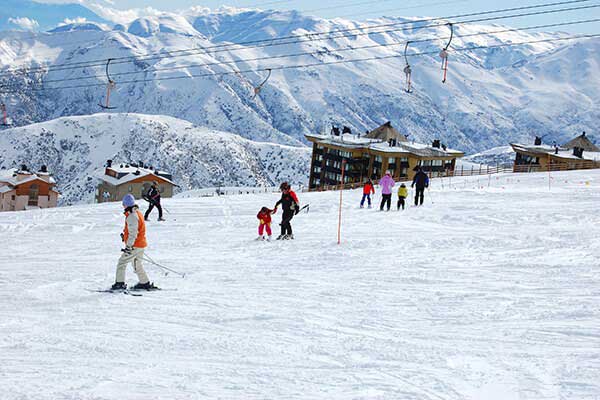
Because of its geographic location and climate, Chile has many snowy mountains across its landscape. In central Chile, the terrain can reach up to 9,800 feet above sea level. These peaks allow residents and visitors to enjoy plenty of winter sports. Snowboarding and downhill skiing are popular Chilean sports. In fact, the country is known as an excellent destination for skiers around the world and Chilean skiers generally perform well in the winter Olympics.
Chile’s other national sport is fútbol (soccer). Like many other Latin American countries, Chile has several stadiums, including the Estadio Nacional de Chile in Santiago. Chileans pride themselves on having hosted the FIFA World Cup final in 1962. There is also a Chilean fútbol league which many Chileans follow.
In addition, Chileans have a long tradition of having and attending rodeos. Rodeos in Chile consist of two paired riders called huasos riding on horses to catch a calf. Rather than being tied up like in North American rodeos, huasos pin their calf down on a large cushion after catching it. Rodeo events are held in a moon-shaped arena called the medialuna.

Get Your Free Report on the World’s Best Places to Retire:
Learn more about the best places in the world to retire in our daily postcard e-letter.
Simply enter your email address below to sign up for our free daily postcards and we’ll also send you a FREE report on The World’s Top 10 Retirement Havens, plus access to over 10 more free reports. Our gift to you, on our favorite destinations.
Chilean Etiquette and Mindset
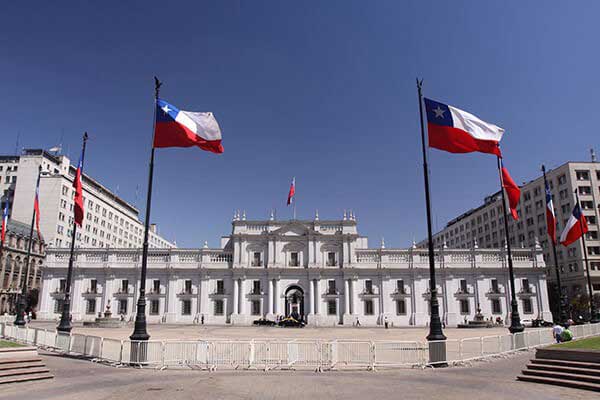
Some of the core principles of Chilean society are family, hospitality, pride, solidarity, and modesty. Chileans tend to be hospitable and helpful and will likely expect that you reciprocate when they need it. Many communities help each other in times of social, economic, or natural disasters. This is especially true in rural areas. Many Chileans are conservative, reserved, and respectful towards authority. However, the younger generation tends to be more liberal. Even so, things like abortion are still considered controversial.
Chileans sometimes describe their country as “homogenous,” and many believe Catholicism and the Spanish language unite them as a culture (99.5% of Chileans speak Spanish). Having said that, since the end of the Pinochet regime, which was instrumental in enforcing a nationalistic approach to managing culture, the country has evolved and is adapting to globalization and migration trends. Unlike other countries in Latin America, Chile tends not to use the term mestizo to describe people of mixed European-Indigenous heritage.
When it comes to proper etiquette, formal greetings consist of shaking hands. It is good to make direct eye contact and address people using señor or señora, followed by the surname. Between friends and family, a kiss on the right cheek is standard, but as a general rule men don’t kiss other men (instead, they hug and often give a light pat on the back). Family is important to Chileans. In addition, men may have a macho, protective, or dominant attitude towards women.
Chileans love to make jokes that revolve around their shortcomings or that of themselves. They tend to be highly expressive when speaking and may interrupt others frequently. Chileans often prefer to avoid conflict and may choose to change the subject rather than address an issue. They may also stand very close to you or touch your shoulder as a sign of friendliness or attentiveness. Hand gestures are not commonly used and may be interpreted as rude.
Expect meals to be somewhat formal. Hosts will often invite their guests to sit before eating and will generally be the first to begin eating. While having a conversation is common during a meal, traditional rules such as keeping your hands above the table, not leaving immediately after eating, and finishing the food on your plate should be considered customary. Refusing food or drink may be interpreted as impolite and it is good practice to bring a gift of wine or chocolate if invited to your Chilean neighbor’s home.
Music, Film, and Literature in Chile
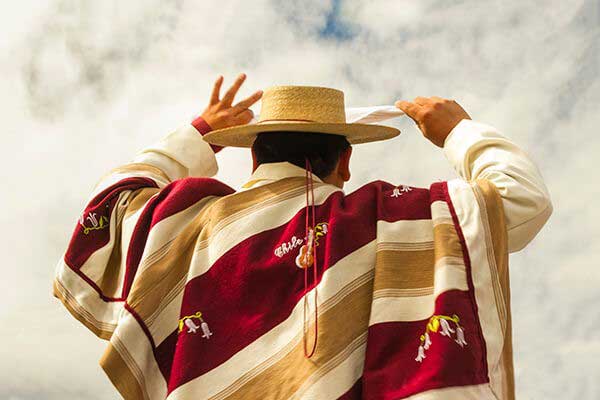
Award winning poets Gabriela Mistral and Pablo Neruda are probably the most known Chilean writers. As well, novelist Isabel Allende who wrote House of the Spirits has found international success with her work. Along with these popular authors, writer Antonio Skarmeta’s Burning Patience, which drew on Neruda’s life, inspired the Oscar-winning film The Postman.
Traditional Chilean music centers around folk dancing and singing. The cueca dance and the tonada song are the most well-known of these. Cueca, short for zamacueca, dates back to 1824 and originated in Peru. The sound was a mix of Andean rhythms and Spanish music. It was re-popularized in the 20th century with new vocal and musical arrangements. The tonada, originating from “tone,” is a style of folk music that was brought to the region by Spanish settlers. It was popular in Argentina, Peru, Bolivia, and Venezuela and was a general way of describing anything that could be played, danced, or sung. The Chilean version is described as a simple, slow-moving, melancholic song. During the Pinochet regime, many other forms of music and dancing were suppressed, and as a result, many protest songs emerged.
Another interesting element of Chile’s culture is its small but impressive film scene. Chilean cinema began to grow in the 1990s after Pinochet’s dictatorship ended. Some of the more successful films which have been produced are by filmmakers Miguel Littin, Raul Ruiz, and Sebastian Lelio. Their films like Palomita Blanca and Elchacal de Nahuetoro have mostly had national success. That said, Lelio’s A Fantastic Woman won an Oscar in 2018 for Best Foreign Language Film.
Featured Image Copyright: ©DieterMeyrl/iStock

